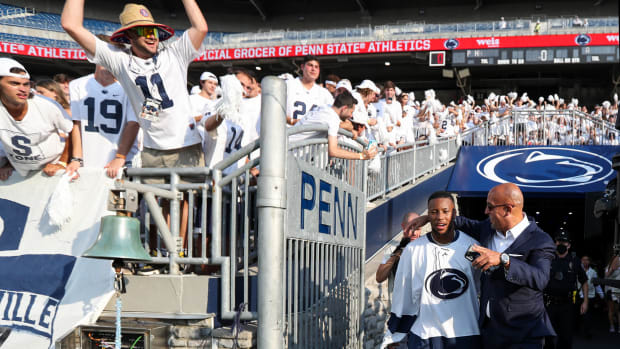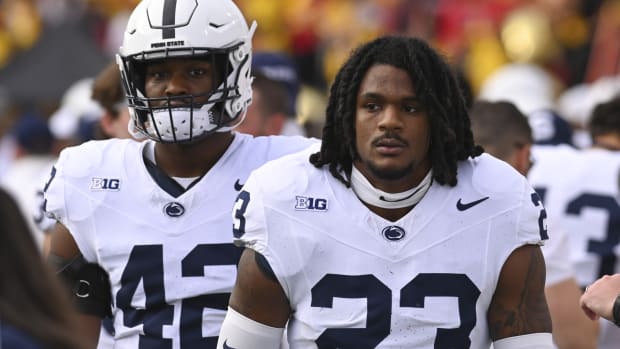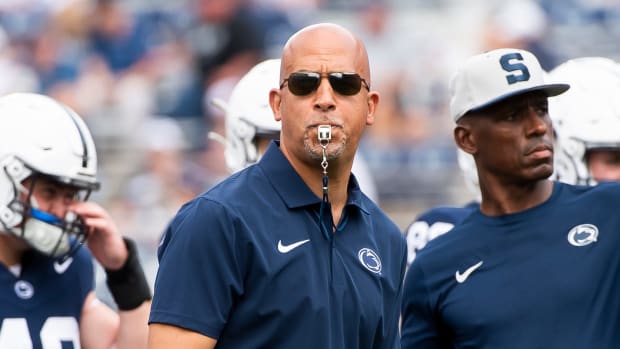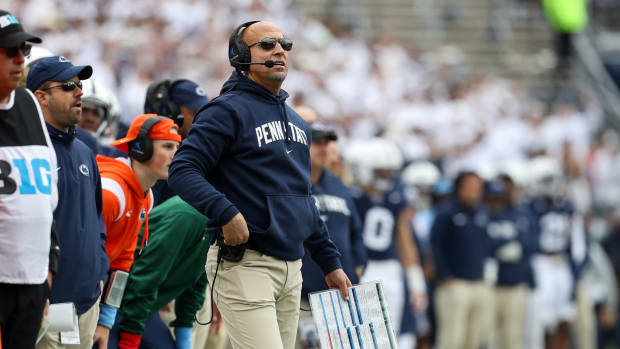‘It’s hard, man’: Ja’Juan Seider on balancing Penn State’s four-RB rotation
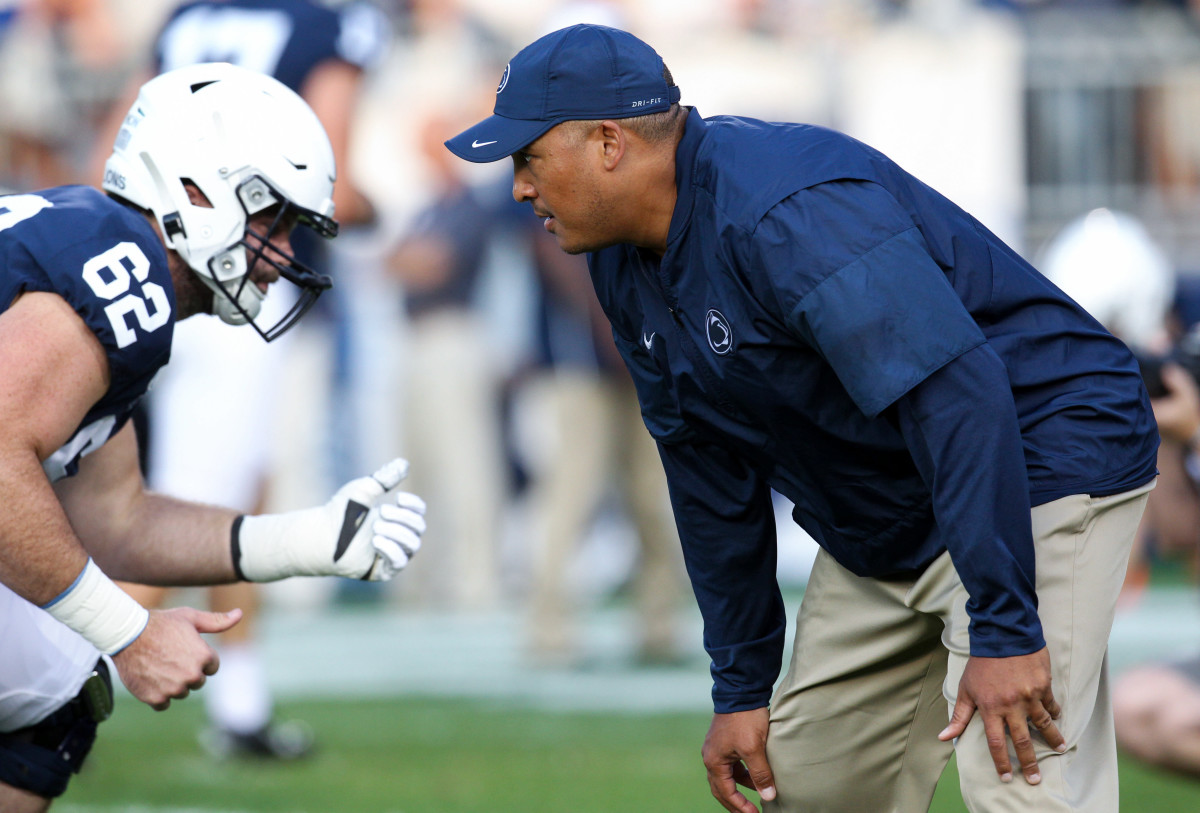
Penn State probably would have liked to have had its running back rotation figured out by now.
Heading into Big Ten play, the Nittany Lions still have four co-starters — Journey Brown, Ricky Slade, Noah Cain and Devyn Ford — at the position, and James Franklin has said on a couple occasions that it'll remain that way until someone separates themselves from the rest of the pack.
“It's hard, man,” running backs coach Ja'Juan Seider said Wednesday when asked about the challenges of balancing a four-back rotation. “I'm not going to sit here and sugarcoat it.”
Added Seider: “There’s not a big margin of separation between 1 and 4."
| Touches | Yards | Avg. | TD | |
|---|---|---|---|---|
Journey Brown | 24 | 222 | 9.3 | 2 |
Noah Cain | 17 | 99 | 5.8 | 4 |
Devyn Ford | 16 | 132 | 8.3 | 2 |
Ricky Slade | 15 | 89 | 5.9 | 1 |
The good news is that Penn State's backfield is clearly talented. Brown, Slade and Ford all possess similar skillsets — each back is a quality receiving option and a big-play threat out of the backfield. Cain, meanwhile, is proving to be a strong between-the-tackles and short-yardage runner.
The bad news is that nobody has gone out and staked their claim as the clear-cut No. 1 running back, and while the statistics through three games certainly look good, the Lions have more-or-less failed to establish the run outside of a few chunk plays.
"[Rotating] four gets tricky because the guy who's starting the game, now he's waiting, waiting, waiting," Seider said. "I've been trying to do a better job of at least the first few series or two or three, trying to establish a guy."
Slade, who started the first two games, is averaging just 1.8 yards per carry and has struggled to hold onto the ball. It's easy to imagine that it can be difficult for the backups to get into a groove, as well, and the rotations have seemed a little confusing at times.
Take the game against Pitt, for example, in which Noah Cain rushed six times for 40 yards and a touchdown on one drive and didn't see the field for the rest of the contest despite the fact that it seemed like the game was calling for a player with his skillset as Penn State struggled to run the ball.
Get rid of Cain's lone drive and an 85-yard run by Brown, and Penn State's backfield rushed 18 times for just 37 yards.
Seider said Wednesday that he wanted to protect his true freshmen from Pitt's tricky third down packages, but "came out of that game more confident" with Cain and Ford than ever before.
It's always easier to have a three-back rotation, Seider said, but as a coach, he also emphasized that he has to be fair.
"It's been difficult for all of us because the kids have earned the right to play," Seider said.

Devyn Ford (28) worked himself into the rotation with a strong summer. "He made a lot of noise in camp," Seider said. "He can do things with his body that normal guys can't do."
"You know, it can be challenging," Franklin said. "There's no doubt about it. But like I said, right now we have four guys that we feel good about.
"You'd love for all four to really step up and dominate or you'd like one or two to separate themselves from the pack, but either way we feel like we have four guys that we can win with that have earned the team's respect and they have got a really good environment and culture and support of each other in that room."
Seider compared the situation to a time when he had four future NFL running backs in his backfield at West Virginia. Back then, he said it was easier to balance the rotation because the Mountaineers used a lot of 20 personnel sets — two running backs and zero tight ends — and often motioned running backs into the slot.
After a couple seasons of rarely putting multiple running backs on the field at the same time, Penn State broke out a couple of two-back sets against Pitt, and Seider alluded to the Lions possibly featuring more of them as the season goes on.
Up next is a matchup against Maryland, which has allowed just 70.7 rushing yards per game — good for No. 10 in the country — and zero rushing touchdowns through the season's first three games, but gave up 183.9 yards per game a year ago, which ranked No. 85 in the nation.
Brown will likely start, and it's safe to say that Penn State would like for someone to run wild on the Terps and make the backfield their own. But regardless of what happens Friday, Seider is confident that things will sort themselves out eventually.
"We've got a long season," Seider said. "We've played three games. Maybe guys rise up. Maybe guys get pushed back a little bit. The only person that's going to control that is them."

